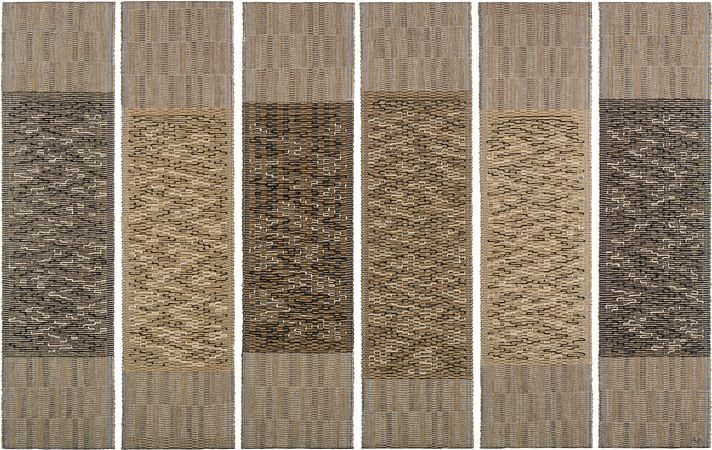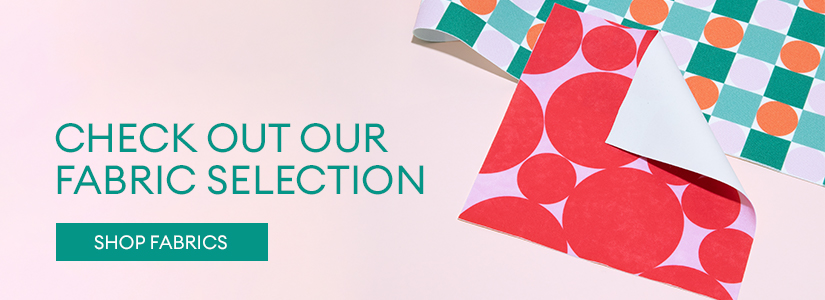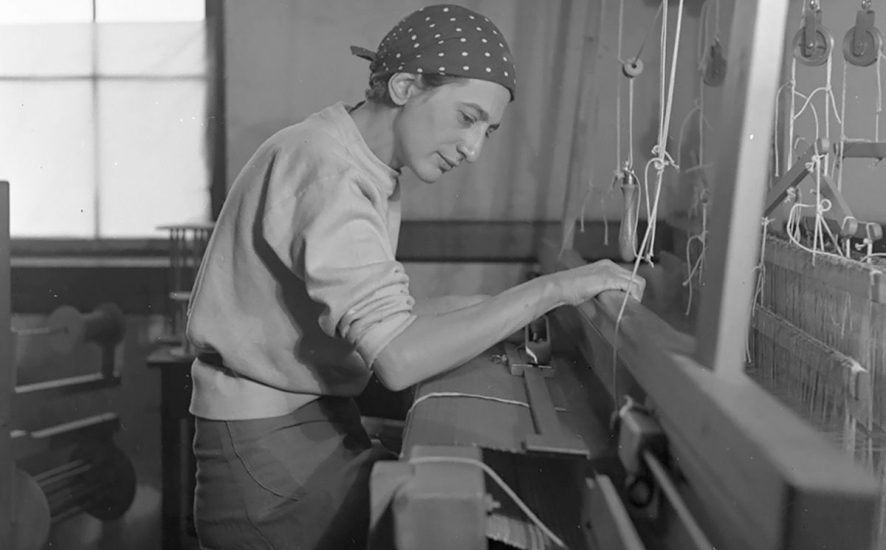Anni Albers is one of the best-known textile artists of the 20th century. She was essential in the development of contemporary textile art.
Born Annelise Fleischmann, Anni Albers was of Jewish descent and lived in Berlin. Despite living conditions for art students being incredibly poor, Anni decided to attend Bauhaus to follow her intrigue of art and painting. This was a contrast to the comfortable life she was used to – women were banned from certain classes taught at the school, and Albers resorted to weaving after she did not get into a glass workshop. Despite this, Albers quickly began to embrace the tactile construction challenges of the medium. In 1931 after Albers became head of the weaving workshop, she and her husband Josef Albers (an instructor at the school) became central to Bauhaus teaching.
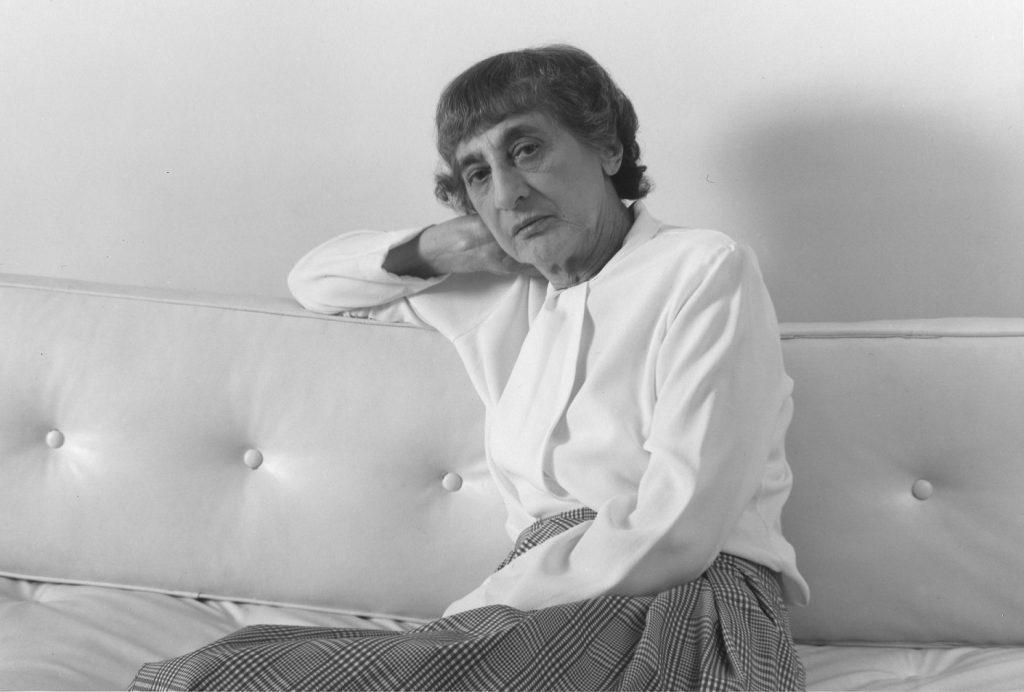
Anni Alber’s weaving and artwork revolutionized textile design. Through her exploration of both handlooms produced and mechanically produced pieces. Her innovation of fabric design for mass-production as well as her experimentation with more artistic work led to critically acclaimed exhibitions. She left behind a great legacy and because of this, her work is still studied today.
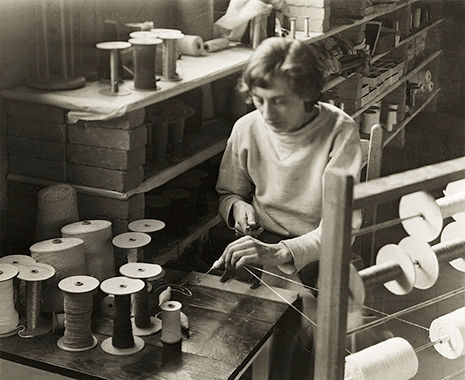
Works of Albers include woven wall hangings, bedspreads, mounted images, and printed textile designs. Although Albers produced many important designs and artworks throughout her life, three of her works stand out in particular.
Untitled Wall Hanging 1926, Synthetic Silk and Synthetic Fibers
Contrasting to her colleagues, Albers preferred a palette of neutral colors when producing woven work. She focused more on geometric designs and weaving techniques rather than vibrant colors. Works such as these were some of the most successful pieces to come out of the Bauhaus.
In this piece, Albers explores the combination of weaving techniques and modern design, created from new synthetic fibers such as artificial silk. These materials would eventually become common in the textile industry, particularly for mass-produced pieces – reflecting her notion of creating pieces that could become models for mass production.
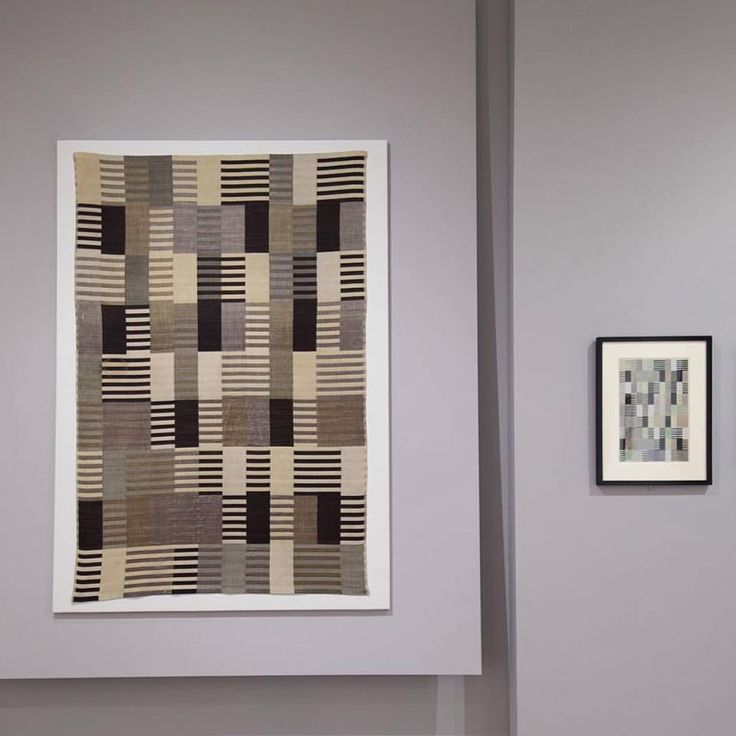
Necklace 1941, Metal Chain, Dish Drain, Paper Clips
It was while teaching in North Carolina after moving to America in 1933, that Albers began working with jewelry. Inspired by pre-Columbian jewelry seen on a trip to Mexico, Albers began designing objects with her student Alex Reed based on household objects, looking at the idea of ‘inexpensive’ jewelry. The explorative project used items such as chains, pins, nuts, and ribbons to play with the materiality of objects. Popular expectations of jewelry being expensive caused critique from their peers but emphasized their point more. Generally, the jewelry was well-received for its imaginative work.
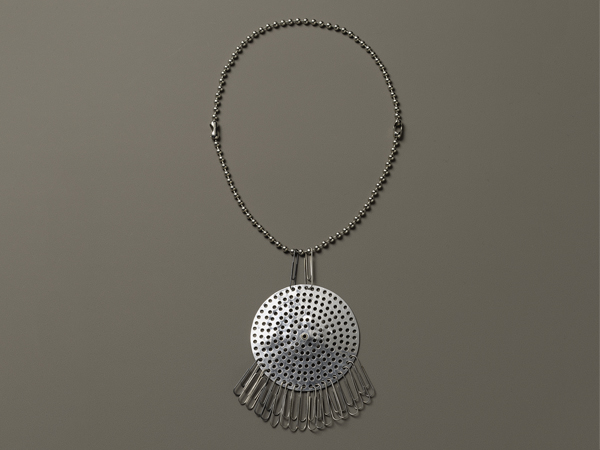
Six Prayers 1965-6, Cotton, Linen, Bast and Silver Thread
Albers was commissioned by The Jewish Museum in 1965 for creating a piece of artwork as a memorial for those who died in the holocaust. Albers used a neutral palette with silver thread to create six abstract textile works to create a contemplative installation. The pieces are open to allow viewers to think and find meanings in the space, whilst recalling the shapes of burial markers. The width of the work at six ft. references the 6 million Jews murdered by the Nazis.
The weave creates a wandering pattern with the threads varying against the grid structure. The non-uniform weave reflects the idea of ‘Tikkun, the notion of ‘social repair’ to Jewish identity.
